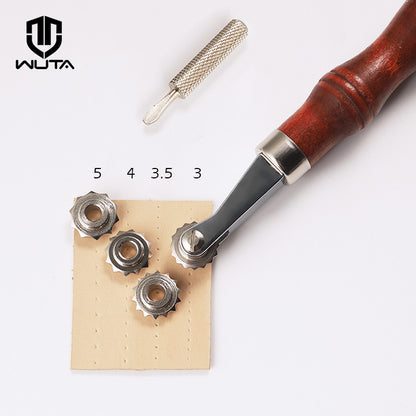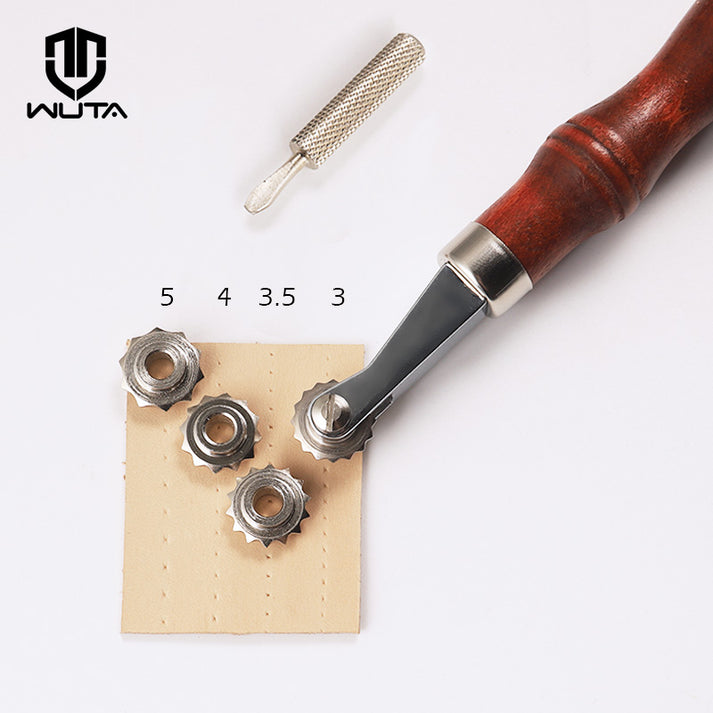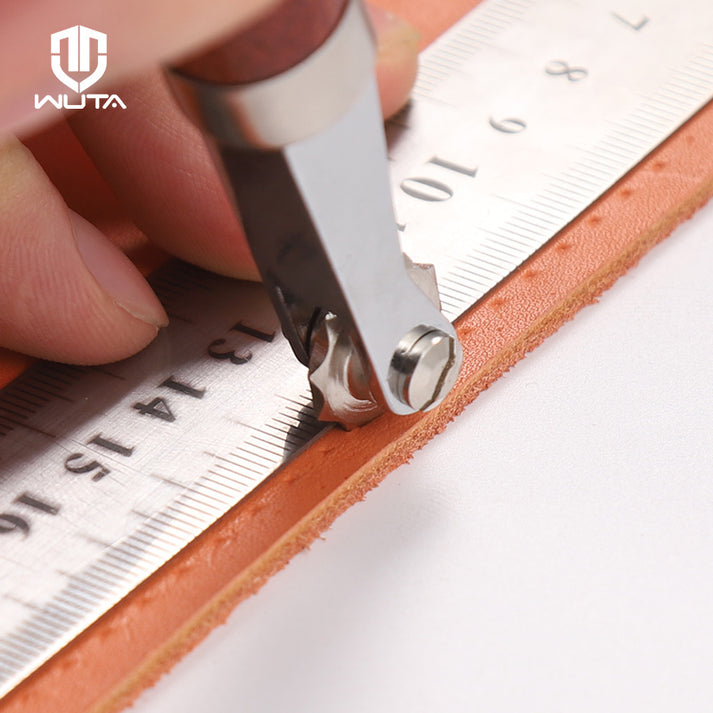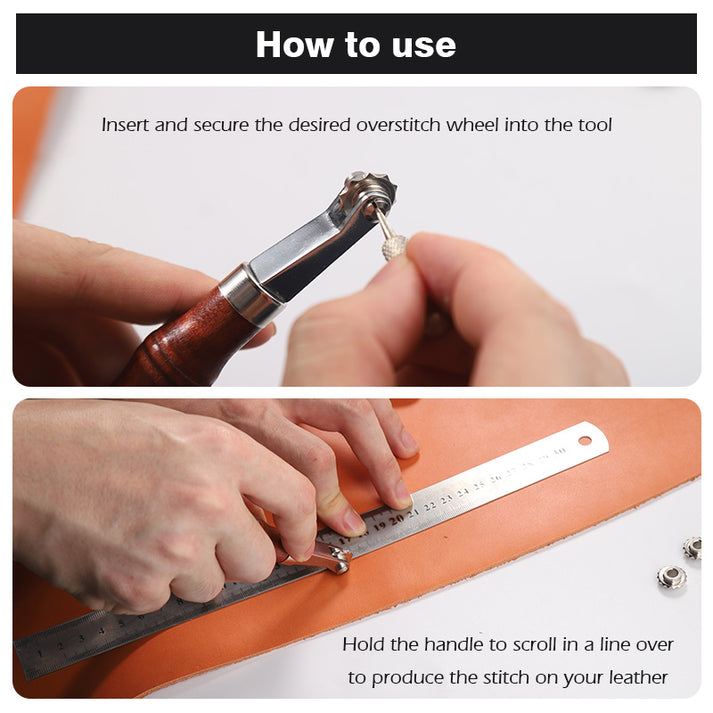
What is an overstitch wheel used for?
Are you currently dissatisfied with the results of using a pricking iron to mark out stitching holes, finding that your stitching looks messy? There's a handy and straightforward tool that could assist you called an overstitching wheel.
This simple tool will definitely help improve the look of your stitches but also help to create more decorative edges.
1.Features and construction of the Overstitch Wheel
An overstitch wheel is a tool used for leather sewing and consists of a solid wood handle and a creasing wheel made of stainless steel. Usually, an overlock wheel is equipped with four creasing wheels to accommodate different sewing needs. In addition, the overlock wheel comes with a screwdriver for easy adjustment and replacement of the crease wheel.

Overstitch wheels are sometimes used instead of pricking irons as they help produce a much neater even looking stitch due to the fact the spiked rolling wheel creates very uniform even spaced marks in your leather where your stitches will go. In fact you can almost make your hand stitches look like machine stitches with the overstitch wheel. There are also a few other uses for Overstitch wheels that can help improve your leathercraft skills so please read on for more info and useful tips and tricks.
2.Different uses for an Overstitch wheel
The Overstitch wheel serves primarily as a tool for marking stitching holes, but it can also be utilized in various other ways to enhance the aesthetics of your projects.
One alternative application for an overstitch wheel is creating decorative edges on leather items. By combining the wheel with a leather groover, you can produce a straight decorative groove or edge. Simply glide the leather groover along the leather to create a straight groove along the edge. Then, use the overstitch wheel within the groove to simulate the appearance of machine-stitched lines. Applying firm pressure on the leather is necessary to ensure that the wheel pierces the material, resulting in the desired faux stitching effect.
Additionally, the overstitching wheel can be employed to recess stitches. This technique involves running the wheel over the stitches once they are in place or sewn. As a result, the thread becomes embedded into the leather, giving a tidier look while also safeguarding the thread from potential scraping or tearing during regular use.

3.Using an Overstitching wheel offers several advantages
- Improved Stitching: The wheel helps create neater and more uniform stitches that align in a straight line, enhancing the overall appearance of your leathercraft projects.
- Stitch Protection: By recessing the stitches with the overstitching wheel, they are better shielded from everyday wear and tear, reducing the likelihood of thread damage.
- Decorative Tool: The overstitch wheel can be utilized purely for decorative purposes by creating indentations along the edges of your leather projects, adding an aesthetic touch.
- Versatility on Curves and Tight Edges: This tool excels at marking stitching hole positions neatly and accurately, even along curves or in tight edge situations where other methods may be challenging.
- Machine-Stitched Look: By utilizing the overstitching wheel, your leather projects can attain the appearance of machine-stitched products, lending a professional and polished finish.
- Alternative to Pricking Irons: Instead of using traditional pricking irons to mark stitching hole positions, the overstitching wheel offers a viable alternative that can yield similar results.
- Time and Effort Savings: Compared to pricking irons, using an overstitching wheel saves time and requires less physical effort when creating stitching holes, making the process more efficient.
4.Tips for using Overstitching wheels
A.Preparation: Before using the overstitch wheel, the leather parts to be sewn need to be glued first to make sure the position is accurate.
B.Adjusting the creasing wheel: Select the appropriate creasing wheel according to the sewing needs and use a screwdriver to adjust and fix it.
C.Stitching operation: Gently roll the overstitch wheel over the leather in the direction of the stitching line. Maintain moderate pressure to ensure that the creasing wheel fully compacts the stitching, but avoid excessive pressure that could cause damage to the leather.
D.Attention to detail: During the stitching process, pay special attention to detailed parts, such as corners and curves. Adjust the angle and pressure of the overstitch wheel appropriately to ensure that the stitching fits tightly and does not become loose or broken.

Considering the advantages outlined above and the affordability and user-friendliness of an overstitching wheel, it would be beneficial to consider investing in one for your own leathercraft endeavors. While some artisans may still prefer traditional pricking irons, there is undoubtedly room for both tools in your toolbox. Each tool serves its purpose in specific situations, ultimately saving you time and enhancing the overall appearance of your projects. Best of luck with your upcoming leathercraft project!
